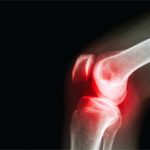NEW YORK (Reuters Health)—Non-surgical care for knee osteoarthritis (OA) is uncommon among older adults, especially in regions of the U.S. where total knee arthroplasty rates are high, a large retrospective analysis shows.1
“As rheumatologists, we often think of knee arthroplasty as the last resort, after patients have tried and failed more conservative treatments, such as physical therapy, weight loss, NSAIDs and maybe glucocorticoid injections,” Michael Ward, MD, MPH, of the U.S. National Institute of Arthritis and Musculoskeletal and Skin Diseases in Bethesda, Md., tells Reuters Health by email.
“The most surprising finding from this study is that, at the population level, many patients don’t receive these more conservative treatments,” he says.
“Because lack of use of these conservative treatments was more common in regions of the country where total knee arthroplasty was more commonly used, we think it is often being substituted for conservative care,” he adds.
As reported in Arthritis & Rheumatology, Dr. Ward analyzed data on close to one million U.S. Medicare beneficiaries with knee OA in 2005–2010. Healthcare utilization for knee complaints—i.e., rates of physician visits, physical therapy, knee injections and arthroscopy—was compared among beneficiaries who lived in regions with high or low rates of total knee arthroplasty.
About one-third of patients (33.1%) had total knee arthroplasty during a median follow-up of 5.6 years. Higher rates of visits for knee complaints were associated with increased risks of arthroplasty, while use of physical therapy, specialist care and intra-articular treatments were associated with lower risks.
The frequency of total knee arthroplasty varied from 26.4% in the lowest quintile region to 42.1% in the highest quintile.
Notably, rates of physician visits, physical therapy, specialist care, and use of intra-articular injections varied inversely with arthroplasty quintile. For example, physical therapy was used by 32.5% of beneficiaries in the lowest quintile region and 23.6% in the highest quintile region.
Physical therapy was associated with lower total knee arthroplasty rates across all quintiles.
Dr. Ward says, “The next steps are to determine if this is due to underappreciation of the role of conservative care on the part of patients or primary care providers, or lack of access to it, or referral patterns that prioritize orthopedic surgeons, particularly in those regions with high rates of total knee arthroplasty.”
Orthopedic surgeon Timothy Gibson, MD, medical director of the MemorialCare Joint Replacement Center at Orange Coast Medical Center, Fountain Valley, Calif., comments in an email to Reuters Health, “This is a retrospective cohort study, which shows correlations, but has limitations and weaknesses inherent to such a study.”
“It is surprising that this study found that physical therapy and other conservative strategies are not widely used in older adults with knee pain,” he says. The American Academy of Orthopedic Surgeons clinical practice guideline on treatment of osteoarthritis of the knee “gives a strong recommendation for use of home exercise, strengthening and low-impact exercise as part of conservative treatment,” he says.2
“NSAIDs, non-narcotic pain medication and weight loss are also recommended,” he notes. “The benefit of different injections is not as clear cut. There are numerous other conservative treatments that are not recommended due to lack of quality studies to measure their efficacy.”
“The article refers to total knee arthroplasty as a risk to be avoided, such as cancer or heart attack, yet in the opening paragraph states that it is ‘the most effective treatment for advanced knee osteoarthritis. It is one of the most successful surgeries for improvement in quality of life,” he adds.
“Cost-effective care should include conservative treatments that work, and perhaps delay the need for surgery, but not to avoid the most effective treatment when it is appropriate,” Dr. Gibson says. “The article is concerned about the cost burden of total knee arthroplasty, yet there is cost in using ineffective conservative care, as well.”
References
- Ward MM. Osteoarthritis care and risk of total knee arthroplasty among medicare beneficiaries. Arthritis Rheumatol. 2021 Jun 8. Online ahead of print.
- Jevsevar DS. Treatment of osteoarthritis of the knee: Evidence-based guideline, 2nd edition. J Am Acad Orthop Surg. 2013 Sep;21(9):571–576.


